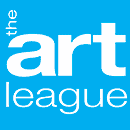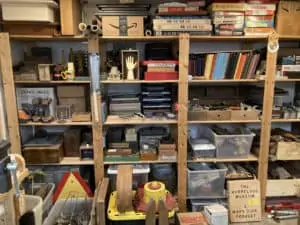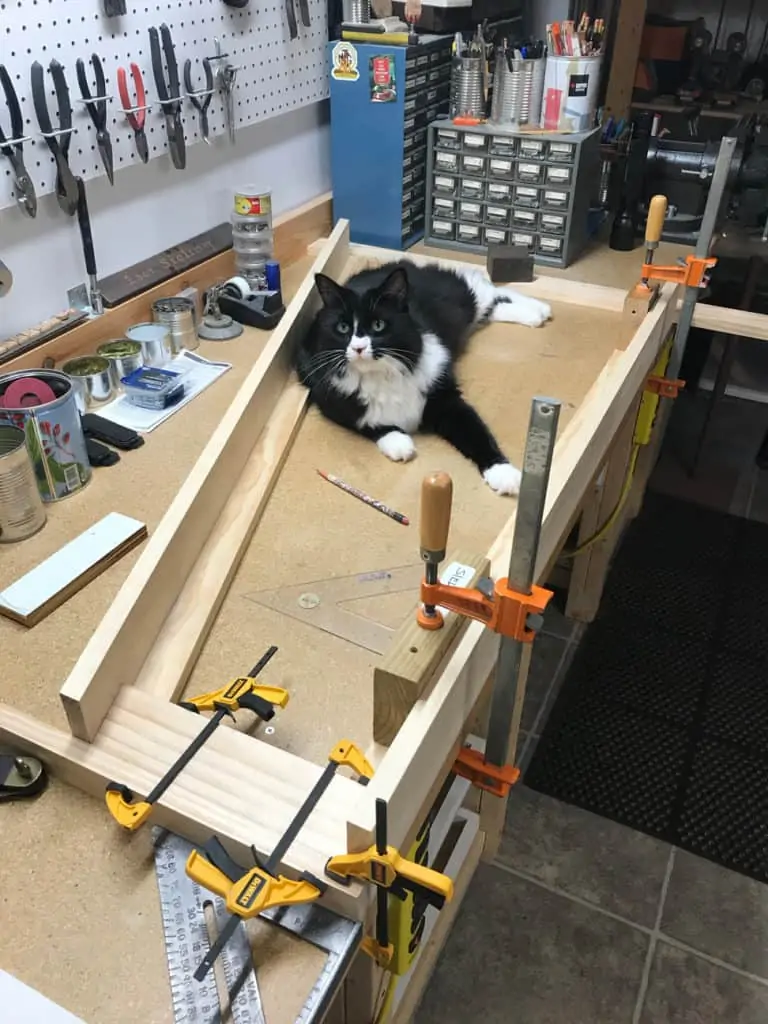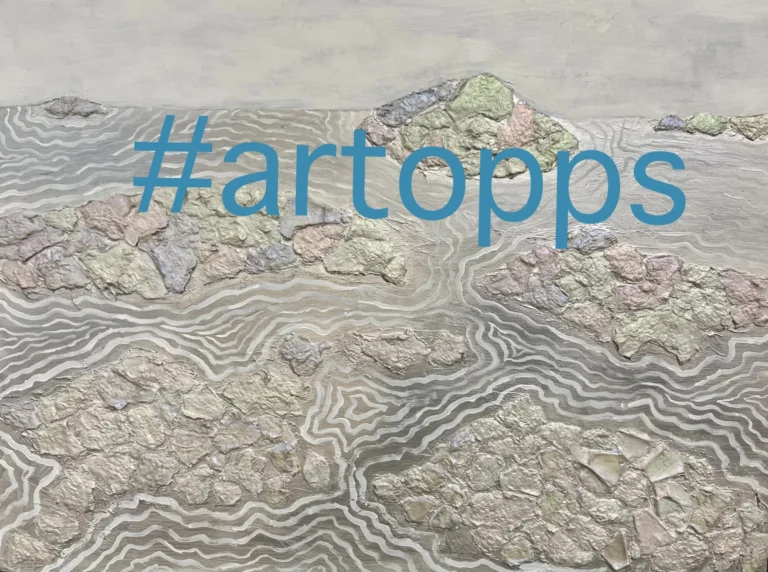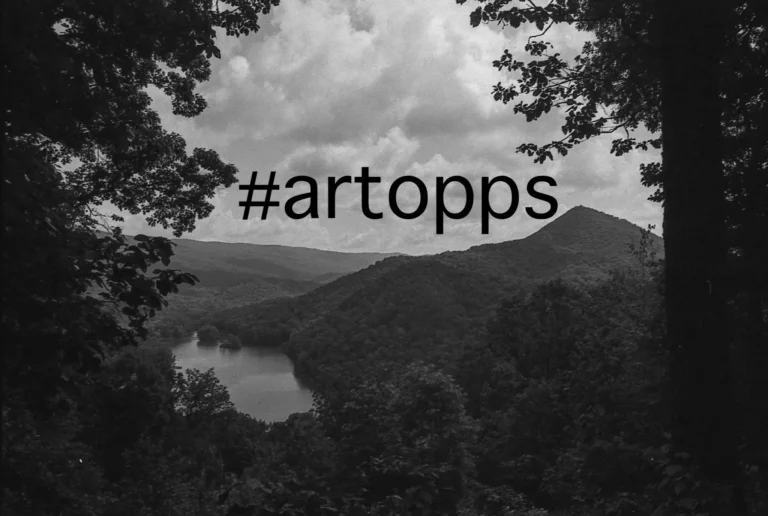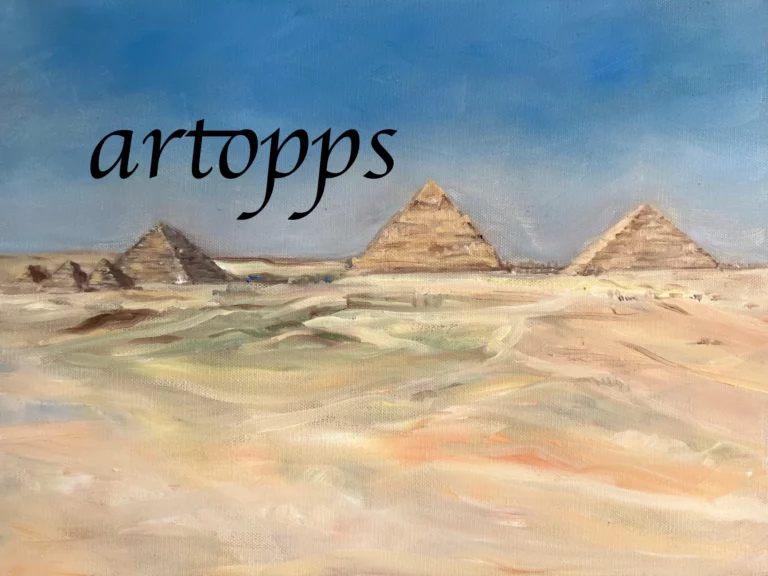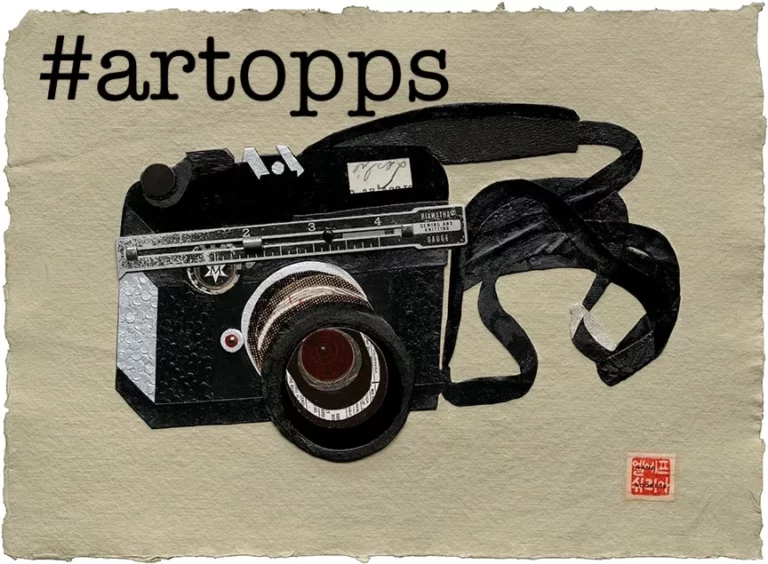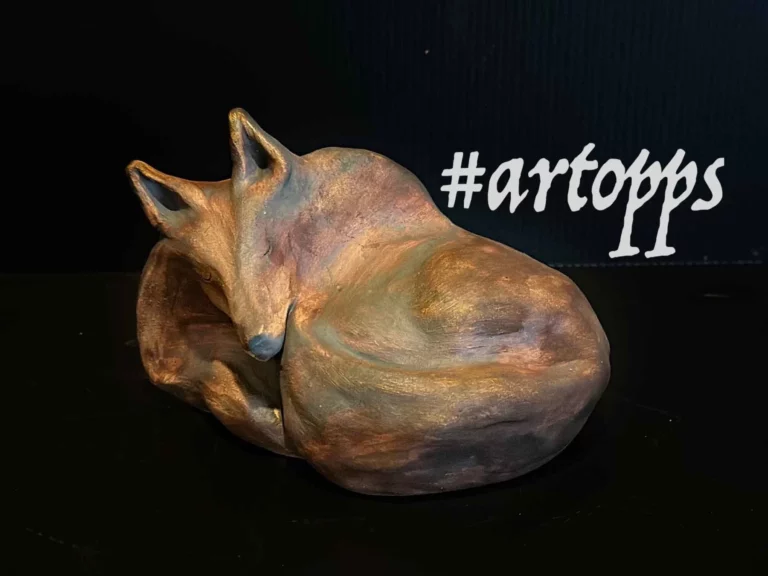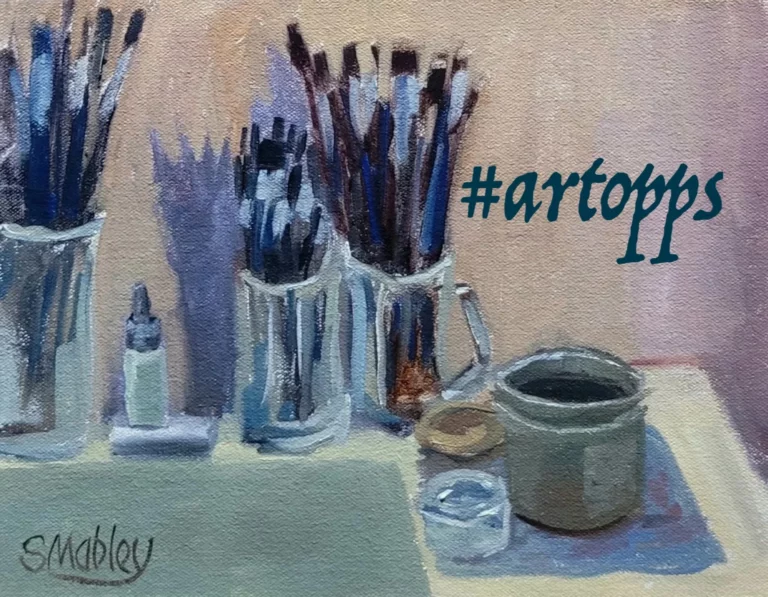Ten Questions for Bryan Sieling
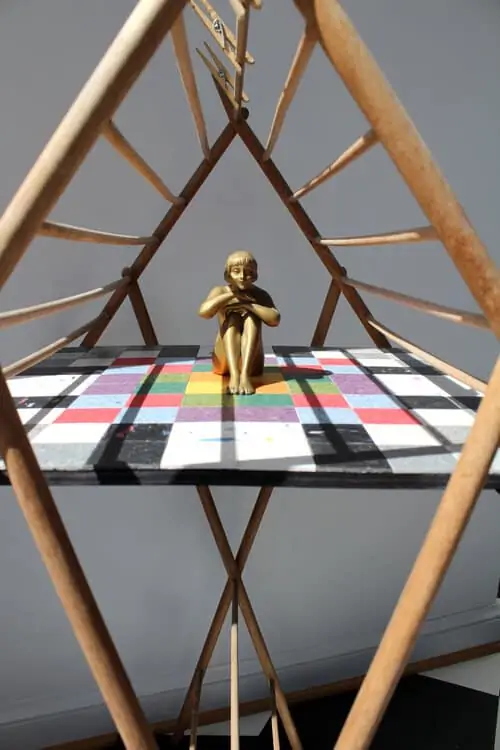
Our August solo artist on assemblage, and collecting random objects for art sake.
By Julia Chance
As an artist whose medium is found objects, Bryan Sieling has trained his eye to imagine the possibilities. In his hands, cabinet parts, old picture frames, vintage tinker toys, mechanical innards, retro game pieces, and used furniture are transformed into assemblages where things familiar and odd are repurposed to fascinating effect.
An ornately carved cuckoo clock, partially disassembled and festooned with metal pulleys, becomes a sculpture when angled upside down on a pedestal. A solitary seated toy figure placed on colorful linoleum that is sheltered by a wooden drying rack references the past year of quarantine. An assemblage consisting of a hi-hat cymbal, model airplane propeller, and vintage stocking stretchers appears poised for motion, by either flying or walking. These are among the 18 works in Re | Context, Sieling’s solo exhibit on view at The Art League Gallery through September 5.
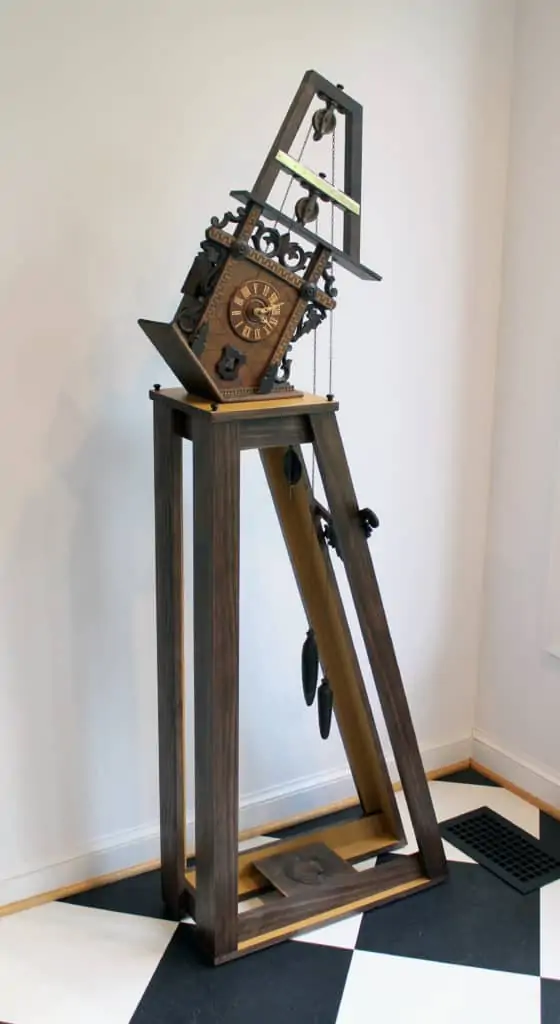
In order to master the art of assemblage it helps to first master the art of collecting. Sieling rarely passes up an antique mall or thrift store when he is out and about, and if he hears about an interesting yard or estate sale, he’s there. Having a network of friends and family who are familiar with his art style is bonus. “I will get random texts [from them] with photos of interesting things and I’ll respond with a thumbs up or down.”
For him, spontaneity is key for finding good stuff. “I never hunt for a specific item. If something catches my eye and looks like it has potential, I’ll pick it up and file it away in my studio,” which he has done for 30-plus years. Just recently, “I’ve acquired a collection of foundry molds, a 1930s beveled glass oak kitchen cabinet, and a 1940s baby feeding table that I think will make a great shadow box.”
Sieling’s path to becoming an artist is unconventional. With few job prospects after earning a degree in Environmental Education from Ohio State University, he returned to his hometown of Portsmouth, Ohio, and discovered a new art museum had opened. “I walked in the door and my life and career were changed forever,” he recalls. “It immediately rekindled my childhood interest in art, and I was most interested in how exhibitions were organized, developed, designed, and installed.”
He volunteered at the museum for two years and was eventually offered a staff position. He then decided to formalize his newfound interest by earning an MA in Museum Studies from George Washington University. Since then, he has overseen exhibition design for the recently shuttered Newseum and most recently the National Museum of African American History and Culture from which he retired last fall. Those experiences have been helpful for his design-driven art practice.
The past year of quarantine, “has provided the luxury of time and a clearer head,” the Alexandria-based artist says, both undoubtedly beneficial in preparing Re | Context. Here, he reveals his strategy for collecting objects; explains why artists Joseph Cornell and Marcel Duchamp are such inspirations for him; and shares what he hopes viewers get from his assemblages.
Describe your artistry
I make assemblages with objects found in second-hand shops, estate sales, yard sales, and my neighbor’s trash.
What is your creative process like?
For each assemblage, I start with a single item. This is usually an empty box or drawer, an old wooden board or panel, or an interesting piece of old furniture. Then I begin the process of mining my 30-year collection of found objects, looking for pieces that work together physically and visually.
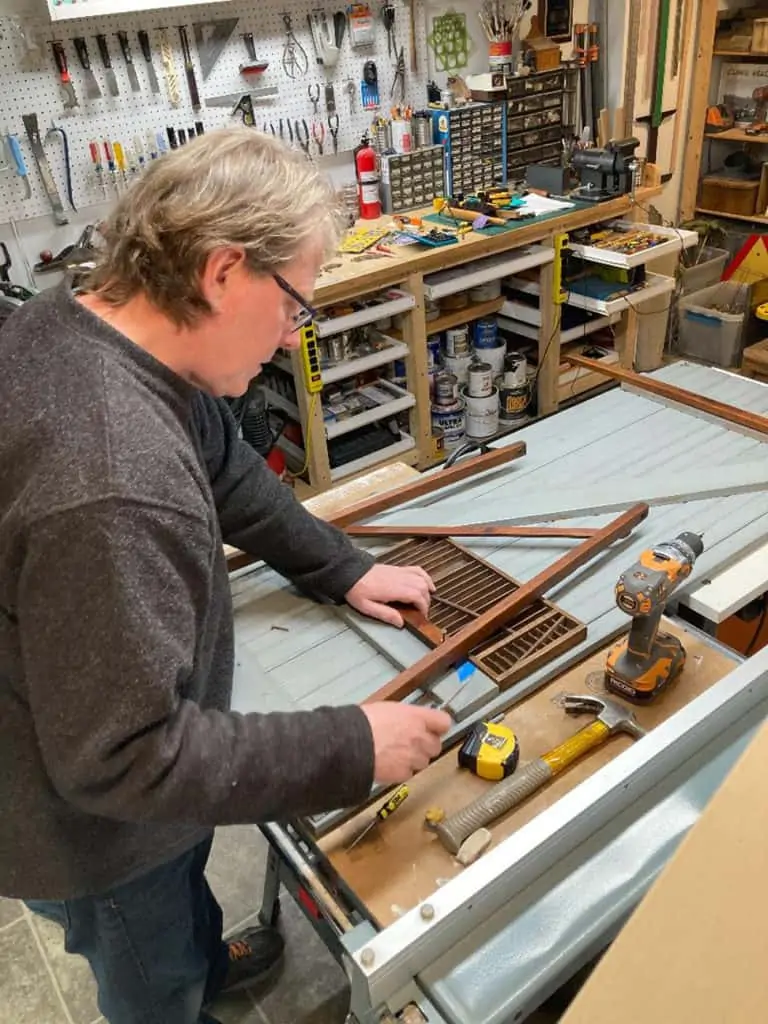
Do you make art every day?
I don’t make art every day. I often need to walk away from a piece in process and let it (and me) percolate about it for a day or two or more. If I have more than one piece in the works at the same time, I’ll set one aside and work on the other for a while.
Describe Re | Context.
Re | Context consists of 18 assemblages, rendered in the forms of free-standing sculpture, shadow boxes, wall reliefs, and what I call “semi-functional furniture.”
What are the questions or ideas that drive your artwork?
My work is not question or idea driven. It is object and design driven. A story or narrative may begin to emerge as I’m working on a piece, and if so, I will embrace and nurture that, but I let the objects speak for themselves and craft the aesthetics as I go.
What artists, contemporary or past, inspire you? Why?
Joseph Cornell and Marcel Duchamp. But let me back up to a time long before I discovered them as a young adult: My earliest recollection of artistic inspiration is not of an artist at all, but the cover art on my childhood set of Golden Book Encyclopedias. If you are old enough to remember these, you know that the cover of each volume is a wonderful, trompe-l’oeil-like arrangement of seemingly disparate objects contained within that volume: virtual assemblages in their own right. As a child, I was—and still a—mesmerized by these covers. I would study them for hours. I loved the 3-dimensional effect and the mysterious theatrical shadows cast by each object. I still have my original 16-volume set.
When I discovered Cornell’s work many years later, I was stopped in my tracks. His intriguing shadow boxes immediately rekindled my childhood memory of the encyclopedias. I felt the two were interconnected, like twins of different mothers. I was moved to begin collecting interesting and intriguing objects with the intent of making things with them when I had enough inventory (and time) to work with.
In addition to Cornell, I love the work of Marcel Duchamp. The whole idea of his “readymades,” where an off-the-shelf object is presented as art, makes me think and smile. It forces you to look at an object for its inherent qualities, rather than its mundane, manufactured purpose. I can’t help but think these influences somehow led me to pursue a career in museum work—exhibit design specifically—where I got to craft the public presentation of amazing objects for nearly 40 years.
What was the first piece of art you created that you were especially proud of?
It was probably a crayon drawing I did in elementary school of a rainstorm. I took the unusual step of drawing the rain drops first (long, white crayon lines to indicate a heavy downpour), then carefully coloring in the background around each raindrop with people, cars, and buildings. It won a blue ribbon in the school art show, and I still have it today.
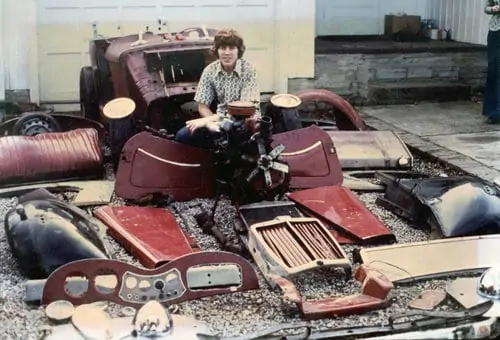
When did you know that you were an artist?
I’ve been toying with art for as long as I can remember, but I never really considered myself an “artist” until recently when I started making assemblages full time. I was fairly good at drawing as a kid and got excused from class to create holiday-themed colored-chalk murals on the classroom chalk board (while my classmates continued studies in their seats!). So, everyone thought I was going to be an artist when I grew up. As I am wholly self-taught, I’m a bit shy about calling myself an artist—even today. I feel that term is more suitable for those with fine arts degrees who have paid their dues and earned the title.
What is something you have yet to achieve?
I’ve always wanted to do a grid or row of 16 shadow boxes inspired by my set of Golden Book Encyclopedias.
What do you hope viewers glean from Re | Context?
I hope viewers are drawn in, to study details, discover materials, and ponder possible motives and narratives and to just enjoy the intrigue or whimsy intended with each piece.
Bryan Sieling’s Top Three Creative Must-haves:
“A large inventory of objects to pick through as I work on a piece.”
“Hanging out with my glorious bob-tail cat Gus while he watches me work (and sometimes gets in the way).”
“Listening to Radio Paradise while working in my studio.”
Can't get enough?
Sign up for our weekly blog newsletter, subscribe to our RSS feed, or like us on Facebook for the latest Art League news. Visit our homepage for more information about our classes, exhibits, and events in Old Town Alexandria, Virginia.
